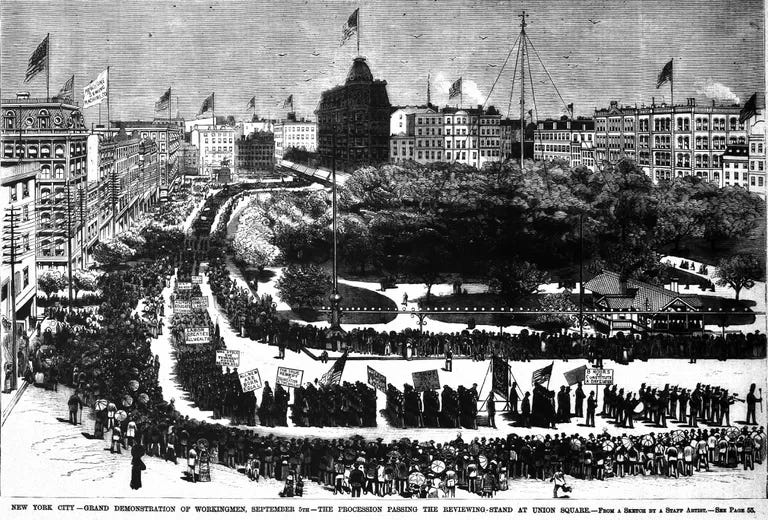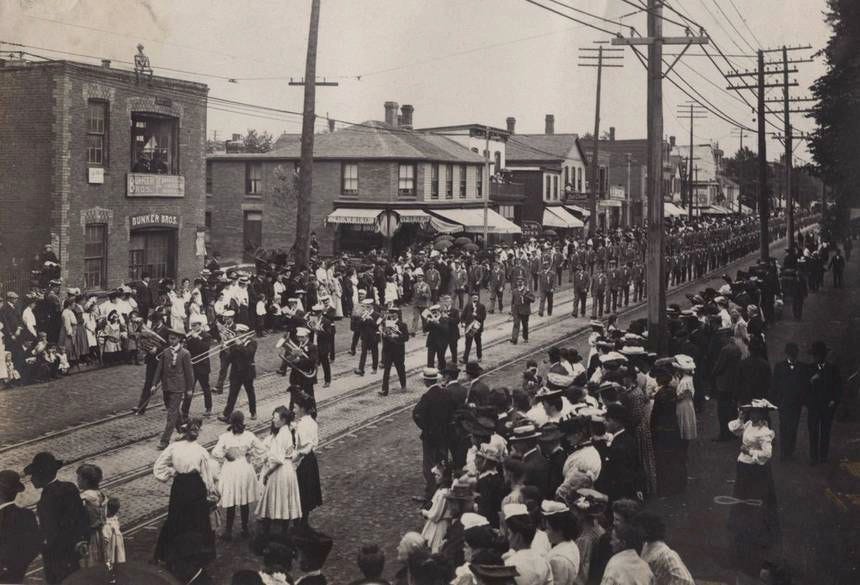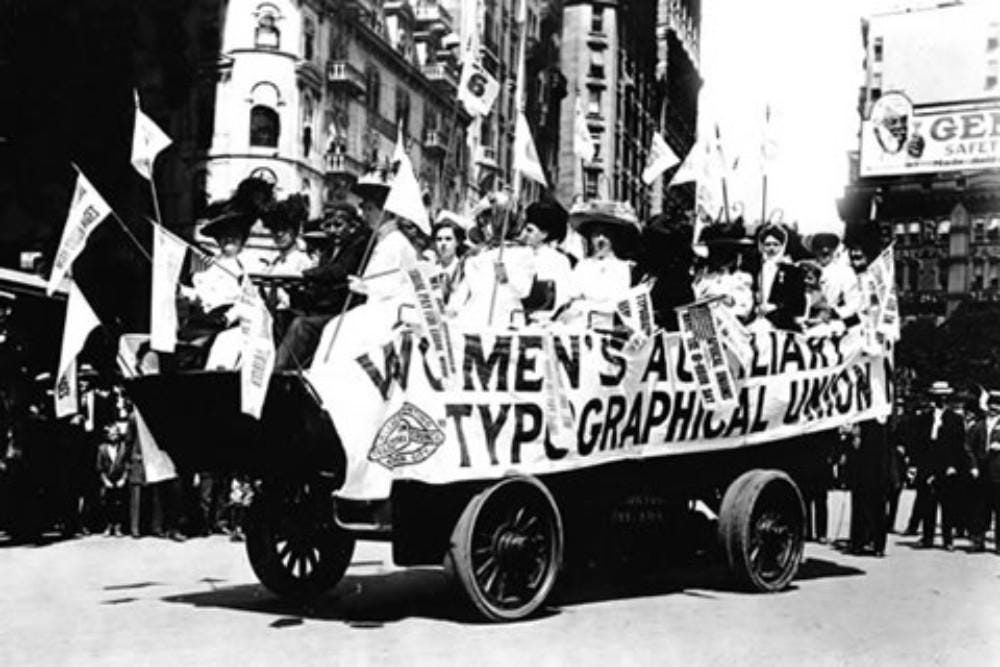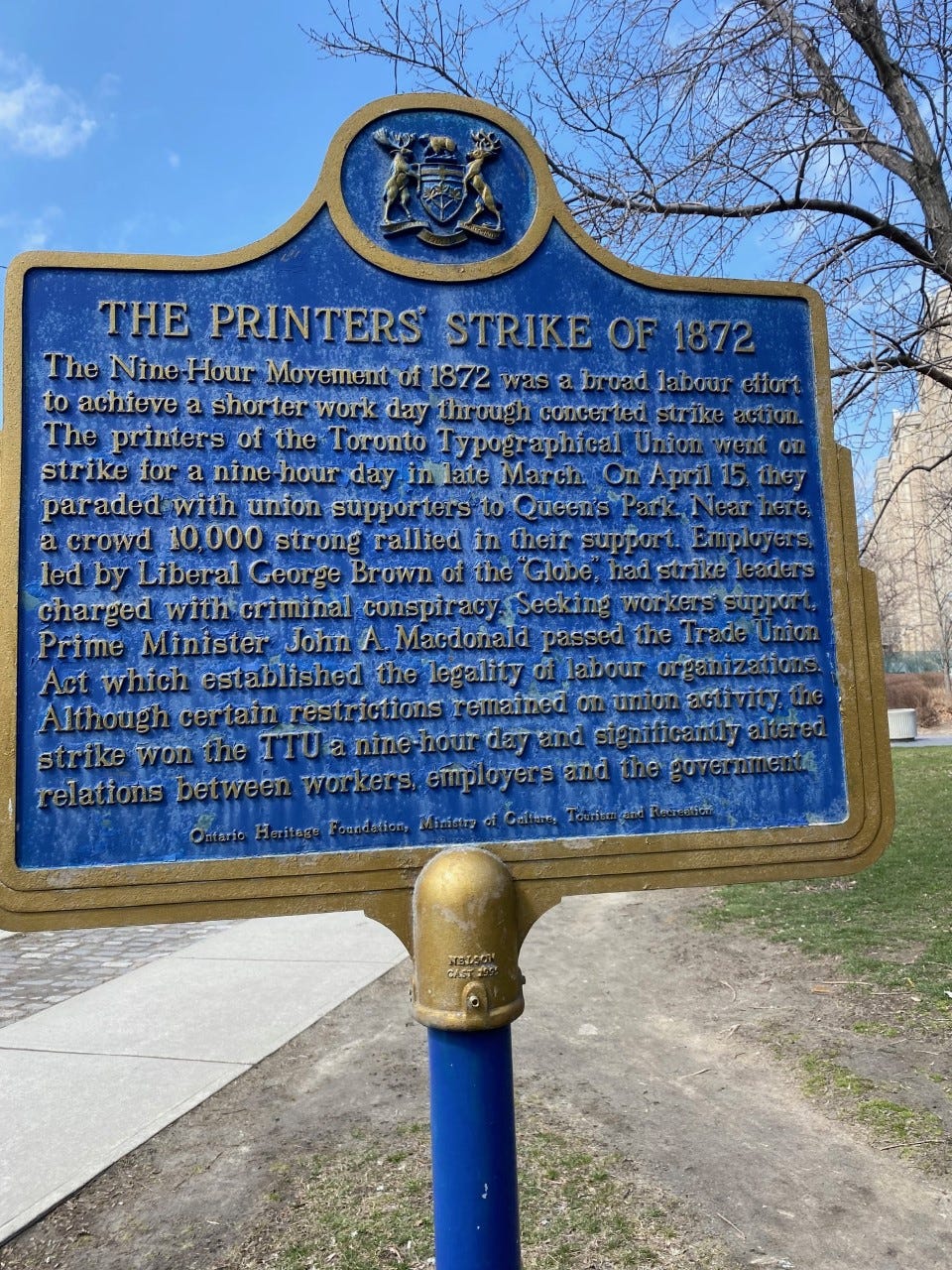Stop the Presses for Labor Day (or Labour Day, which is how you should spell it)
The American Labor Day holiday is actually an import from Canada, but they forgot the U.
So many of my posts have been expunged from Treehugger for not being up to date or having too many links, but I have archives! Here is one I did some version of every Labour day, reconstructed here.
The North American holiday actually has its roots in a newspaper strike in Toronto, a fight over toxic working conditions.
American histories of Labor Day often give credit to a certain Peter J. McGuire, general secretary of the Brotherhood of Carpenters and Joiners in New York City. In 1882 he proposed a holiday celebrating the working people, “who from rude nature have delved and carved all the grandeur we behold.” The first parade was a big success; in an article titled In 1882, Labor Day originated with a parade held in NYC, Emily Nonko writes in 6sqft, “Along the route, which passed Canal Street on its way to Union Square, hundreds of seamstresses hung out the windows cheering the procession, blowing kisses and waving their handkerchiefs. It’s said as many as 20,000 men marched that day.”
But did Labor Day really originate with a parade in NYC? Where did McGuire get the idea?
A decade earlier in 1872, labour unions were illegal in Canada, but the printing trades were fed up; they were working 12 hours a day, six days a week, exposed to poisons like lead, antimony and solvents. There were deadly accidents from steam-driven presses. Demanding better working conditions, printers formed the Toronto Printers Union, went on strike, and marched on the Provincial Parliament. Joined by other workers, 10,000 participants – fully a tenth of the city’s population – showed up.
Newspaper publishers, led by George Brown of the Globe (which became the Globe and Mail), fought back. According to Canadian History in an article titled The First Labour Day, “Brown brought in workers from nearby towns to replace the printers. He even took legal action to quell the strike and had the strike leaders charged and arrested for criminal conspiracy.”
Prime Minister John A. Macdonald, who was always fighting with Brown, sided with the union, passed the Trade Union Act which decriminalized unions, and got the strike leaders released from jail. From that year on (originally in June to celebrate the Act), labour celebrated the event: "The parade that was held in support of the strikers carried over into an annual celebration of worker’s rights and was adopted in cities throughout Canada."
On July 22, 1882, the Toronto Trades and Labour Council invited New York's Peter J. McGuire, also a co-founder of the American Federation of Labor, to speak at one of those labour celebrations in Toronto. He liked what he saw; according to Wikipedia, “Returning to the United States, McGuire and the Knights of Labor organised a similar parade based on the Canadian event on 5 September 1882 in New York City, USA.”
Most of the world celebrates Labor on May 1, the anniversary of the Haymarket Riot in Chicago in 1886. But as Brendan Koerner wrote in Slate, that was a problem in the US.
Though May 1 became an important day for Socialists and Communists, state governments and less radical labor leaders feared that the date was too emotionally charged. In 1894, after President Grover Cleveland ordered the brutal suppression of the Pullman Strike, he realized that he had to do something to curry favor with the labor movement, which viewed him with contempt. Worried that a May 1 holiday would encourage rabble-rousing in commemoration of the Haymarket Riot, he followed the lead of several states and made the first Monday in September a federal holiday in honor of the workingman.
The Canadian government, also worried about commies and looking to give people an end-of-summer holiday, followed suit, and that’s how North America got a holiday at the end of summer break.
I had never seen any American acknowledgment of the Canadian angle to Labor Day until this 2018 Daily News coverage, which ends:
Oddly enough, the American holiday’s roots extend into Canada. In December 1872, Canadian workers organized a parade to support a strike by the Toronto Typographical Union — whose members were working a 58-hour week. The march became an annual event in the Great White North.
So stop the presses, close that computer and go outside. Through American Peter J. McGuire, you can trace Labor Day right back to the toxic working conditions at the Toronto Globe. It is a holiday celebrating labour, but also a celebration of a cleaner, safer working environment.
Read more on the strike that started it all from Jamie Bradburn.






